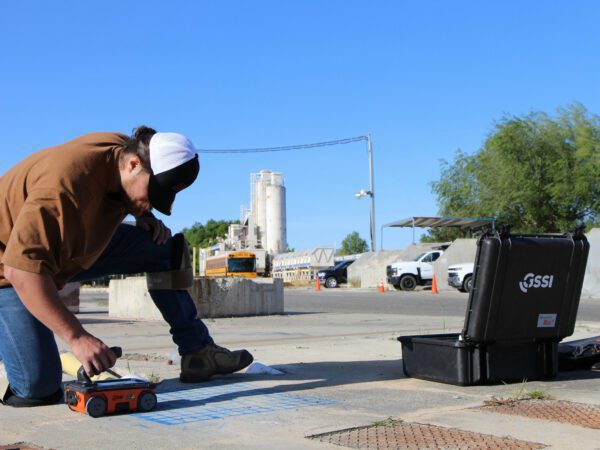Efficient Concrete Scanning Approaches for Construction Jobs
Elevate Your Building Refine With the Strategic Insights of Concrete Scanning for Improved Efficiency
In the realm of contemporary construction techniques, the mission for effectiveness and accuracy is extremely important. Welcoming innovative technologies has ended up being a foundation for achieving these objectives. One such innovation that has transformed the building and construction sector is concrete scanning. By utilizing the critical understandings offered by concrete scanning, construction specialists can unlock a world of enhanced productivity and streamlined processes. The ramifications of integrating concrete scanning go far past surface-level benefits, using a profound effect on task outcomes.

Benefits of Concrete Scanning
Enhancing project effectiveness and safety, concrete scanning provides a non-destructive method for spotting covert things within concrete frameworks. By utilizing innovations such as ground-penetrating radar (GPR) and concrete x-ray imaging, building groups can accurately situate rebar, post-tension cable televisions, electrical conduits, and other blockages before boring, cutting, or coring into concrete.
The benefits of concrete scanning are various. Building and construction websites can be complex settings, and knowing what lies below the surface area can avoid injuries and mishaps.
Moreover, concrete scanning advertises overall project performance by preventing and enhancing process rework. By determining prospective concerns beforehand, groups can adjust their strategies proactively, conserving time and sources in the long run. Essentially, the fostering of concrete scanning technologies is a calculated investment that pays rewards in terms of cost-effectiveness, productivity, and safety.
Innovation Integration for Efficiency
Concrete scanning's capacity to improve operations and enhance job efficiency can be further maximized through strategic integration of cutting-edge modern technologies. By incorporating Building Details Modeling (BIM) software right into concrete scanning processes, building and construction teams can accomplish a greater degree of accuracy and sychronisation. Furthermore, the assimilation of Augmented Truth (AR) modern technology with concrete scanning can enhance on-site visualization, enabling task supervisors and employees to overlay digital details onto the physical setting in real time.
Staying Clear Of Pricey Mistakes
Exactly how can precise interest to information during concrete scanning processes help construction groups in stopping pricey mistakes? Concrete scanning plays a critical function in identifying potential problems prior to they intensify right into expensive mistakes. By using advanced scanning modern technologies such as Ground Passing Through Radar (GPR) and electro-magnetic induction, construction groups can precisely spot rebar, energies, voids, and various other blockages within concrete structures. This degree of precision makes it possible for project managers to make educated choices relating to the format and style of their construction plans, reducing the threat of unintended damage to vital facilities during the building process. Additionally, concrete scanning aids in guaranteeing architectural honesty by identifying weak points or flaws in the concrete very early on, enabling prompt repairs and modifications. By proactively addressing these problems, building groups can prevent expensive errors such as rework, hold-ups, or security threats that may arise from neglected disparities in the concrete framework. Eventually, spending in thorough concrete scanning treatments verifies to be an economical strategy in the future, conserving both time and sources while improving overall task performance and top quality.
Enhancing Job Monitoring
Careful interest to information throughout concrete scanning processes not only assists in avoiding expensive mistakes but also lays a strong structure for effective project monitoring in building and construction ventures. By incorporating concrete scanning modern technology right into read review project administration techniques, building teams can improve workflows, boost interaction, and ensure that tasks remain on track.
Concrete scanning supplies beneficial insights into the structural integrity of existing elements, permitting task managers to make Check Out Your URL enlightened decisions pertaining to style modifications or construction sequences. This positive approach reduces the danger of unanticipated hold-ups or remodel, inevitably saving time and sources. Furthermore, the data acquired from concrete scanning can be integrated into Building Details Modeling (BIM) platforms, making it possible for real-time cooperation and coordination among numerous stakeholders.
Furthermore, concrete scanning aids job supervisors identify possible hazards or obstacles prior to they escalate right into bigger issues, advertising a much safer workplace for all entailed. With boosted presence and precision supplied by concrete scanning innovation, project supervisors can efficiently plan, monitor, and execute construction tasks with greater performance and confidence.
Taking Full Advantage Of Efficiency
One crucial facet of taking full advantage of efficiency is with the adoption of concrete scanning innovation. By using ground-penetrating radar (GPR) and various other scanning techniques, construction teams can accurately situate rebar, avenues, and other subsurface components, minimizing the threat of pricey mistakes and hold-ups throughout excavation and boring.
Moreover, welcoming Building Information Modeling (BIM) software can considerably improve productivity by producing detailed 3D models that improve job visualization and sychronisation among different professions. BIM permits for better clash detection, enabling problems to be recognized and solved prior to building and construction even starts, conserving time and sources over time.
Implementing a lean building strategy, which concentrates on eliminating waste and maximizing effectiveness across all task stages, is an additional efficient approach for making the most of efficiency. By fostering collaboration, interaction, and continual improvement, construction groups can function a lot more cohesively towards attaining task goals in a productive and streamlined manner.
Verdict
Finally, the calculated implementation of concrete scanning in the construction procedure uses this countless advantages, including increased effectiveness, cost financial savings, improved job management, and enhanced productivity. By incorporating this technology, construction teams can prevent pricey mistakes, improve their operations, and optimize their overall job output. Concrete scanning is a valuable tool that can elevate the construction process and cause more lucrative and successful outcomes.
